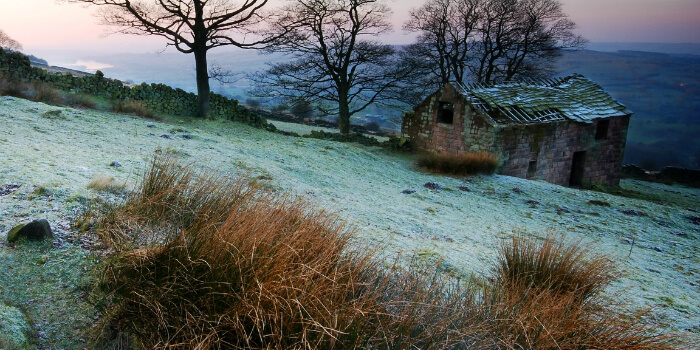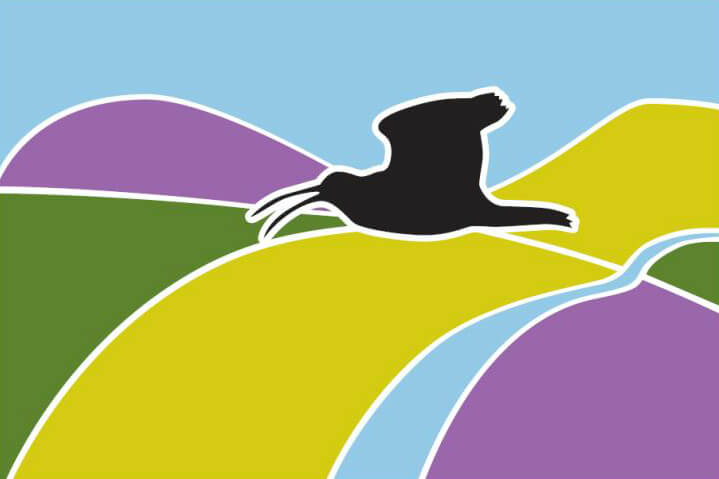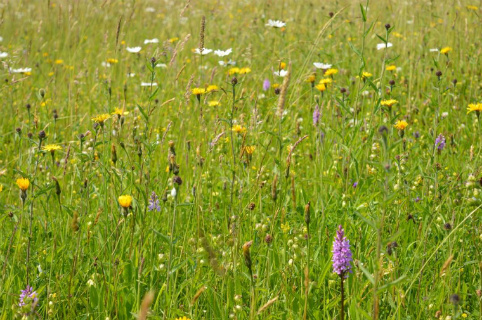News Round Up for the South West Peak The long, dark nights and the recent snowy weather has certainly hit home that winter is upon us! Christmas is right around the corner and we'll soon be in a new year and it is hard to acknowledge that our 5 year SWPLP Programme is drawing closer to its conclusion. Some of our projects will finish at the end of 2021 with a handful continuing to deliver into 2022, including a couple of tree planting projects with over 3700 trees to plant, so we'll need your help! We have had many successes with much to celebrate and we hope you will join us in recognising these amazing achievements. |
|
Christmas Gift Idea #1 |  |
|
Over the last five years the Partnership, local communities and volunteers have been working tirelessly to record and protect some of the most distinctive and important features of the South West Peak landscape. Now you can hang them on your wall! Working with award-winning local photographer Alex Hyde, we have captured some stunning images of the species, habitats and heritage which are distinctive of this part of the Peak District. This limited edition (only 300 copies available) full colour, sustainably printed calendar features 12 unique specially commissioned photographs, many using Alex’s trademark macro-photography to get right up close to the action. The calendar is being sold by the Peak District National Park Foundation with proceeds going towards future projects in the South West Peak. It costs just £10.00 with free postage and packaging. To order your copy follow this link: https://www.peakdistrictfoundation.org.uk/2022-south-west-peak-calendar-is-now-on-sale/ Calendars will be posted out second class on Thursdays, the last date for Christmas posting is 16 December, so final Christmas orders by Wednesday 15 December. Orders received after this date will be posted out in the New Year. |
|
5646 White-Clawed Crayfish Relocated |  |
|
The White-clawed Crayfish is the only native freshwater crayfish in the UK and is listed as endangered on the IUCN red list, making them of international significance. This important species is currently threatened by a disease that is carried by the invasive North American Signal Crayfish. Unfortunately, the White-claws have no resistance to this disease.
Efforts to support the population of the White-claws are being made throughout the UK. With project partner Staffordshire Wildlife Trust we have been leading the charge in the South West Peak, through our Crayfish in Crisis project which is match-funded by the Environment Agency.The final translocation occurred in October this year and a total of 5646 white-clawed crayfish have now found new homes in 7 ark sites across the South West Peak. Ark sites are refuge areas where the crayfish are safe from predation and plague, and where they can reproduce safely. Monitoring surveys conducted earlier this year found evidence of breeding (recruitment) in some of our first ark sites, which is great news for our largest freshwater invertebrate.
Remember when you are out and about in rivers and streams that White-claws and Signal crayfish can be very hard to tell apart, even for experienced biologists. So the best course of action is to leave them be, but please report any sightings to your local Wildlife Trust.
If you’d like to learn more about Crayfish in Crisis head over to the project page at:
https://www.southwestpeak.co.uk/projects/natural-heritage/crayfish-in-crisis |
|
Traditional Field Barn Gets New Lease of Life |  |
|
Hobcroft Field Barn, also known at Littler’s Barn, sits on the Peak District National Park Authority’s (PDNPA) Warslow Moors Estate. A few years ago, its condition was deteriorating, and it could easily have gone the way of so many of these beautiful yet redundant buildings, falling into ruin or disappearing completely. But now, thanks to our Barns and Buildings Project headed up by Catherine Parker Heath, this barn has been saved for many years to come.
This barn is relatively rare in that it had many of its original wooden features intact, with no alterations to its original form. This was one of the considerations in choosing this one to be repaired. It also stands in a highly visible place in the landscape overlooking the Manifold Valley and overseen by the mighty Ecton Hill.
Restoration Projects Ltd. were contracted to do the work under the guidance of conservation architect, Dan Greenway of Evans Vettori Architects Ltd. The roof was repaired, wall plates were replaced, and a new hayloft was put in and tied into the walls to bring extra stabilisation to a once bulging and cracking wall. The whole barn internally and externally was repointed, joinery repairs ensured that doors and windows are now fit for purpose, and internal fixtures and fittings were repaired where necessary.
As Dan Greenway said, “with historic buildings such as this the idea is to take a soft touch, almost as if you cannot tell that renovation works have taken place. We don’t want it to look brand new, we want it to be in keeping with the setting, the landscape it sits in and the purpose it once had.” With public money from the National Lottery Heritage Fund and a contribution from the PDNPA, it was important to make sure that the repair works were carried out to a high standard using traditional materials on a like-for-like basis. So the walls were repointed using lime mortar that was mixed based on samples taken from the existing mortar (analysed by Wormersleys Ltd), joinery matched that which was already there, and stone was cut to reflect the original. Nothing was removed that did not need to removed and most of the doors that are hanging are original and have been patched up, repaired and repainted in an appropriate colour. It was also important to consider wildlife and, with the barn home to pipistrelle and long-eared bats, a licence was acquired to enable a qualified ecologist to remove the bats during the works and rehouse them in bat boxes located in a nearby tree. The works have ensured that ledges and mortar free holes between stonework exist inside the barn for bats to use. A survey planned for next year will monitor whether the bats have indeed returned.  Following the repairs to the barn itself, a hardy band of SWP volunteers set about uncovering the original yard, and a few worked with drystone waller Trevor Wragg to repair the walls. We now have a deeper understanding of how a barn like this once functioned. We also know there are traditional sunken stone troughs along what was once a walled lane, that we are set to explore in the spring.  The newly cleared and exposed yard with repaired walls. |
|
Mosaic Celebration Event |  |
|
| To mark the close of our SWP Mosaic project, Vocational Training Officer Helen Betts organised a celebration event at Westport Lake in Stoke-on-Trent. Even the wet autumn weather didn't dampen the spirits as several individuals and families gathered together to try cycling, canoeing, art and wild play activities. Although the last couple of years have been very difficult for our Mosaic Champions as a result of the pandemic, it was fantastic to see so many of them enjoying being outside in each others' company. |
|
Gradbach Limekiln Brought Back To Life |  |
|
In July and August this year, our Cultural Heritage Officer Catherine Parker Heath, together with a dedicated band of volunteers, repaired and consolidated an 18th or 19th century limekiln at the side of the road in the Peak District Parish of Quarnford. A generous restoration grant was received from the Association for Industrial Archaeology which enabled the structure to be consolidated and repaired. The team worked alongside Mark Womersley and Trevor Wragg to repair and consolidate the structure. On the final weekend, a small replica limekiln was constructed in which lime was burnt to demonstrate the historic process, with limestone donated by Tarmac. The limekiln will shortly be adopted by High Peak Scouts, who will regularly check on the structure and look after it.
 |
|
Fungi Are The Tip Of The Iceberg!Photograph courtesy of Alex Hyde |  |
|
The South West Peak Landscape Partnership is being pioneering again by using DNA technology to find grassland fungi. We are finding out lots more about the groups of fungi of particular conservation importance – known as CHEGD or ‘waxcap fungi’ – but there’s more to know. In the last two years we had really good survey seasons finding 14 sites of international importance. This year we are going a step further by working with the Institute of Biological, Environmental and Rural Sciences at Aberystwyth University to carry out soil analysis. The University is one of very few places in the world to have the technology to identify to species level over 100 different grassland fungi from traces of their DNA in the soil.
Fungi are a bit like icebergs, in that most of their ‘body’ – the web-like mycelium - is hidden underground in the soil. It is only a small part that we see above ground when the fruiting bodies erupt in the late summer and autumn. Because fungi are quite fussy about when they fruit, they often go un-noticed and can easily be missed when you survey a site. To help improve our knowledge of where these specialist fungi are hiding we need to use a range of tools, and increase our understanding of the value and importance of grassland fungi for soil health.
Our specialist mycologist Neil Barden collected 116 soil samples from a range of locations in the South West Peak – some of which we know have high fungal diversity, some with poor diversity, and some that have never been surveyed. By comparing the findings from previous field surveys with the lab results we should be able to gain a fuller picture of what species are hiding in the soil. Add to this information about vegetation and land management and we will be able to put together a guide to understanding what are the most important factors in maintaining and increasing fungal diversity. |
|
Working for Waders PhD success Our very own Dr Leah Kelly successfully completed her PhD thesis in October this year. Leah has moved to Edinburgh where she is working for the RSPB as a Conservation Scientist. We are very proud of Leah and what she has accomplished and wish her all the best in her future career! 
Leah's first paper has been published open access here: https://zslpublications.onlinelibrary.wiley.com/doi/10.1111/acv.12672 with another on the way!
|
|
SWPLP Countryside Apprentices graduate |  |
|
| Our successful apprenticeship project, Future Custodians, has trained 6 Countryside Worker apprentices who have all graduated and are now employed: Rob is self-employed undertaking hedge laying and walling, Emily is working for the National Trust, Lloyd is a ranger with Severn Trent Water, Daniel is working for Natural England, Matt is employed by the PDNPA and Jasmin is working on a dairy farm near Ashbourne. Over the 5 years of this project, 8 Livestock Farmer apprentices were supported by the project to gain their 'tickets' essential licences for their future farming careers such as hoof trimming, tele-handling, trailer and all-terrain vehicles.  |
|
Buxton Wild Weeks a Success |  |
|
2021 saw the first Buxton Wild Weeks take place through a new collaboration with Buxton Civic Association and Transition Buxton. Local schools focused on all things wild for a whole week during their May term, including making visits to their local greenspaces, supported by a wonderful team of SWPLP and PDNPA staff and volunteers. 30 sessions were delivered to 1130 people, with a focus on wildlife, sustainability and nature connection. The visits to schools amounted to 275 hours of conservation activity by young people creating wildlife habitats in the school grounds. Buxton Wild Weeks also created and shared wildlife spotter sheets aimed at championing local greenspaces around Buxton. We wouldn't have managed this success without the support of the volunteers involved so a huge "Thank You" to everyone involved. All 3 schools that initially took part are eager to be involved again in 2022. At one of the schools over 50% of pupils said that Buxton Wild Weeks was their favourite thing from the last school year! 2021 also saw conservation sessions in Fairfield being delivered after a wealth of cancellations, changes and delays due to the pandemic. Fairer for Nature was match-funded by Derbyshire County Council to get local young people out in their area conserving habitats for wildlife. During November a selection of SWPLP and PDNP volunteers supported Youth Engagement Officer Jackie Wragg in practical conservation sessions at Granby Road Wildlife Area. 80 pupils of Fairfield Endowed Junior School donned their work gloves and got stuck in to practical tasks to improve the habitat's conservation value and access for the local community. |
|
Christmas Gift Idea #2 |  |
|
|




















